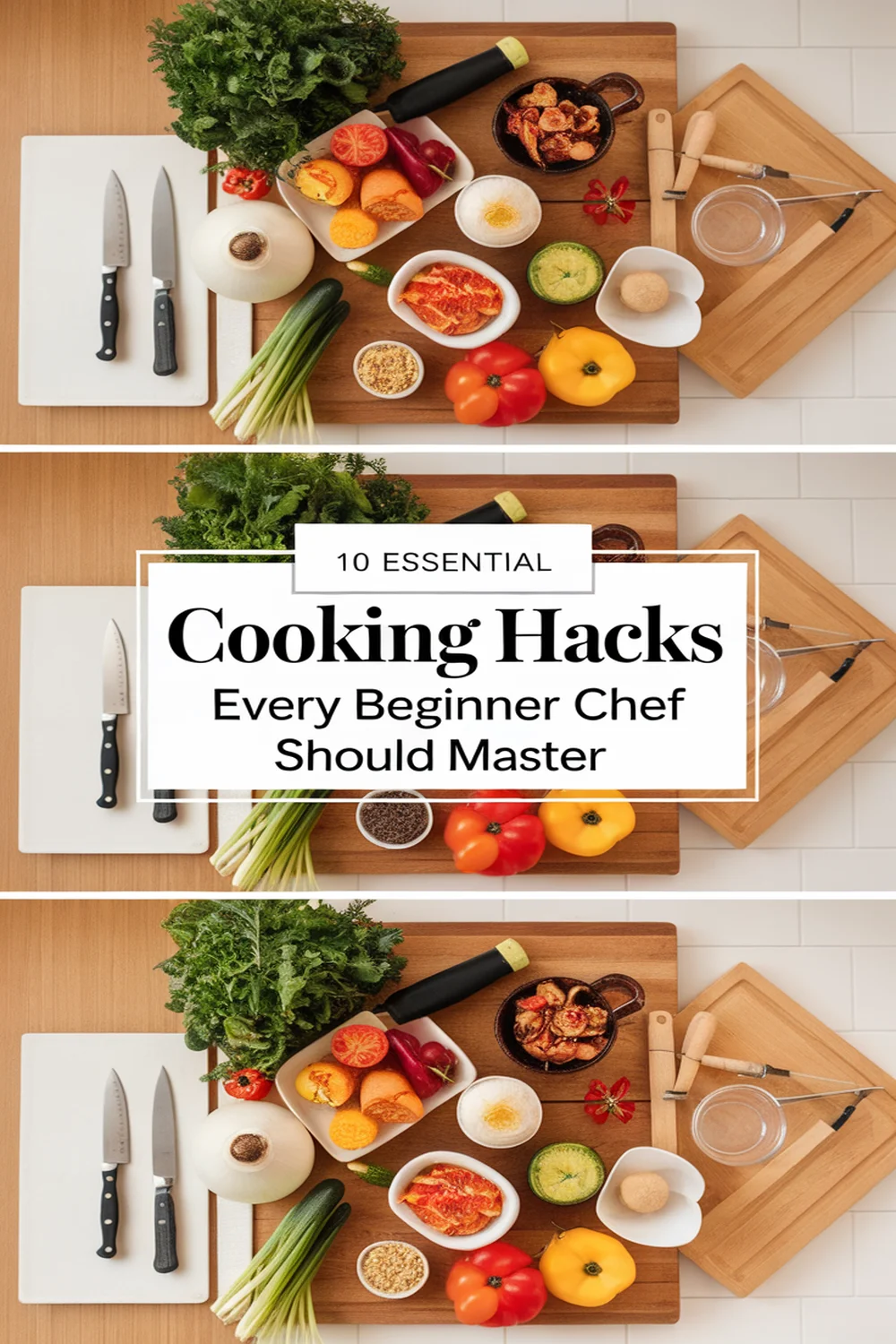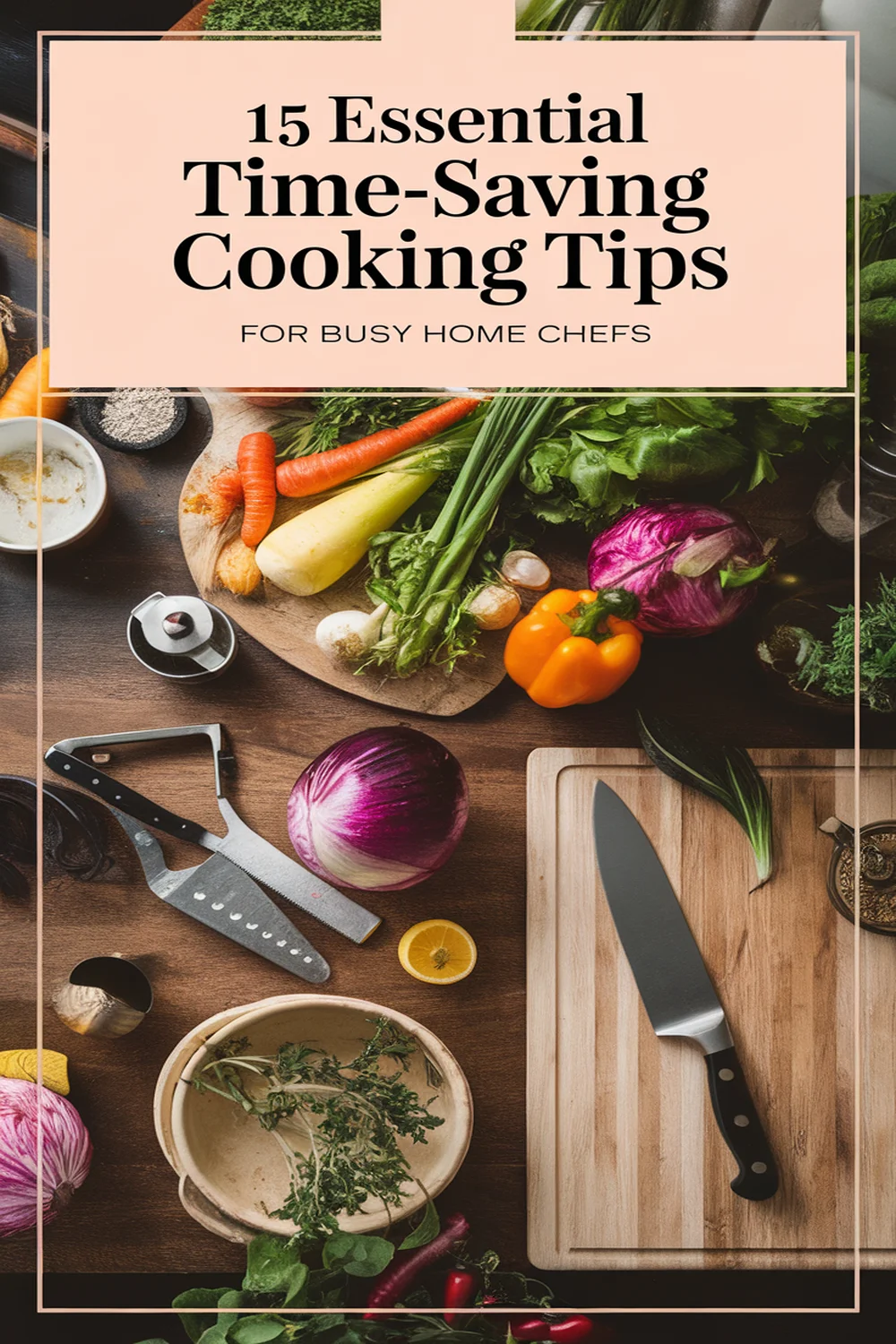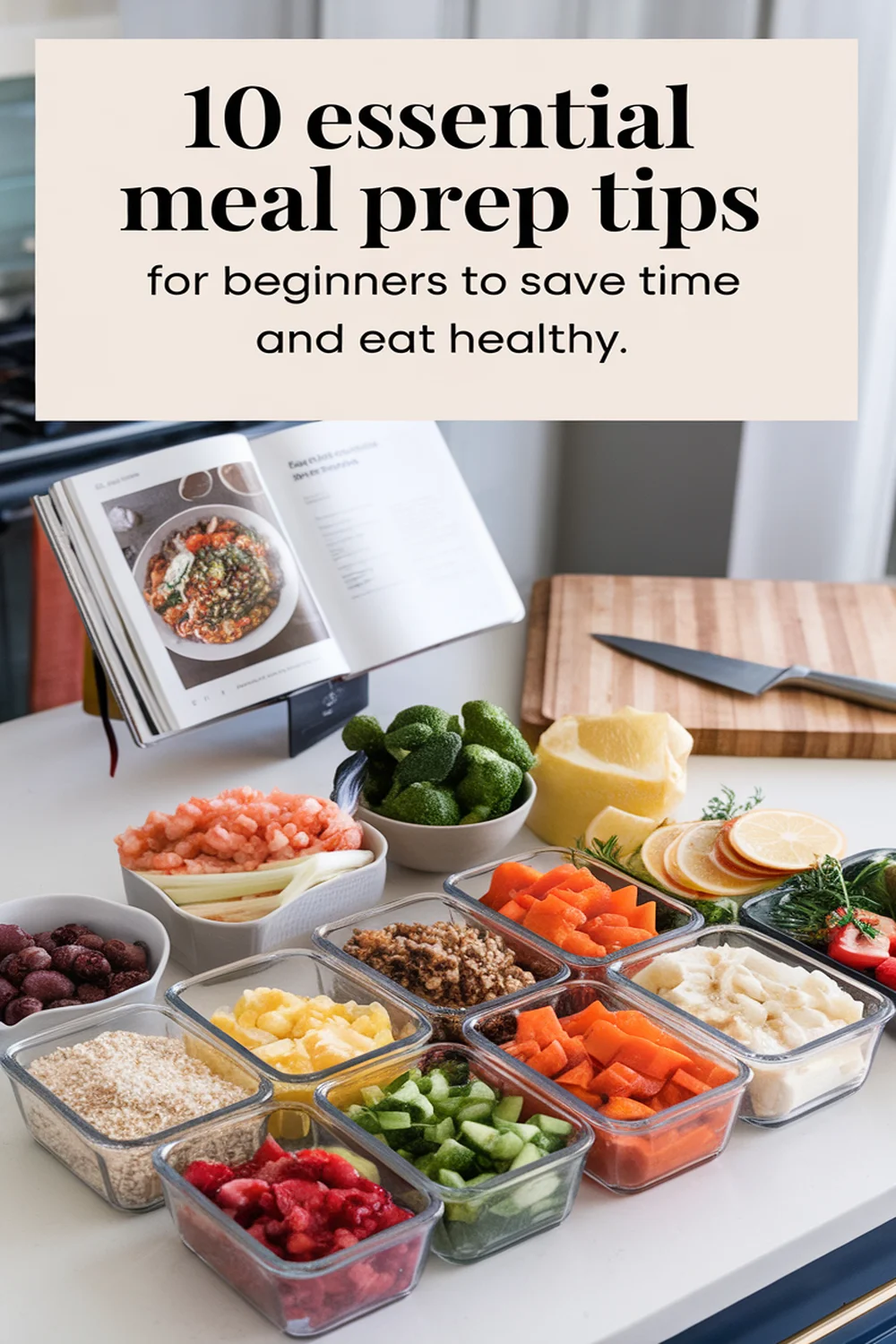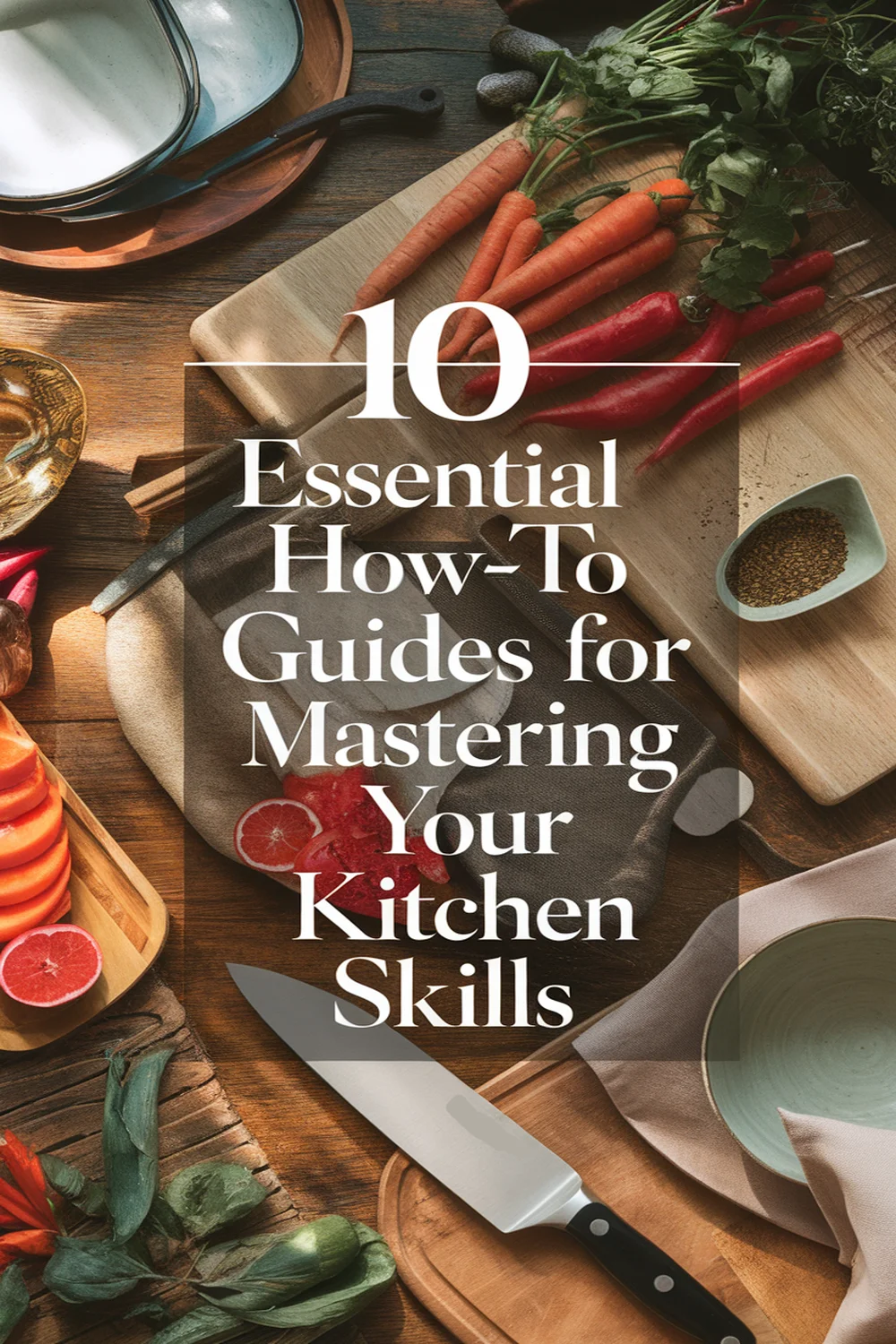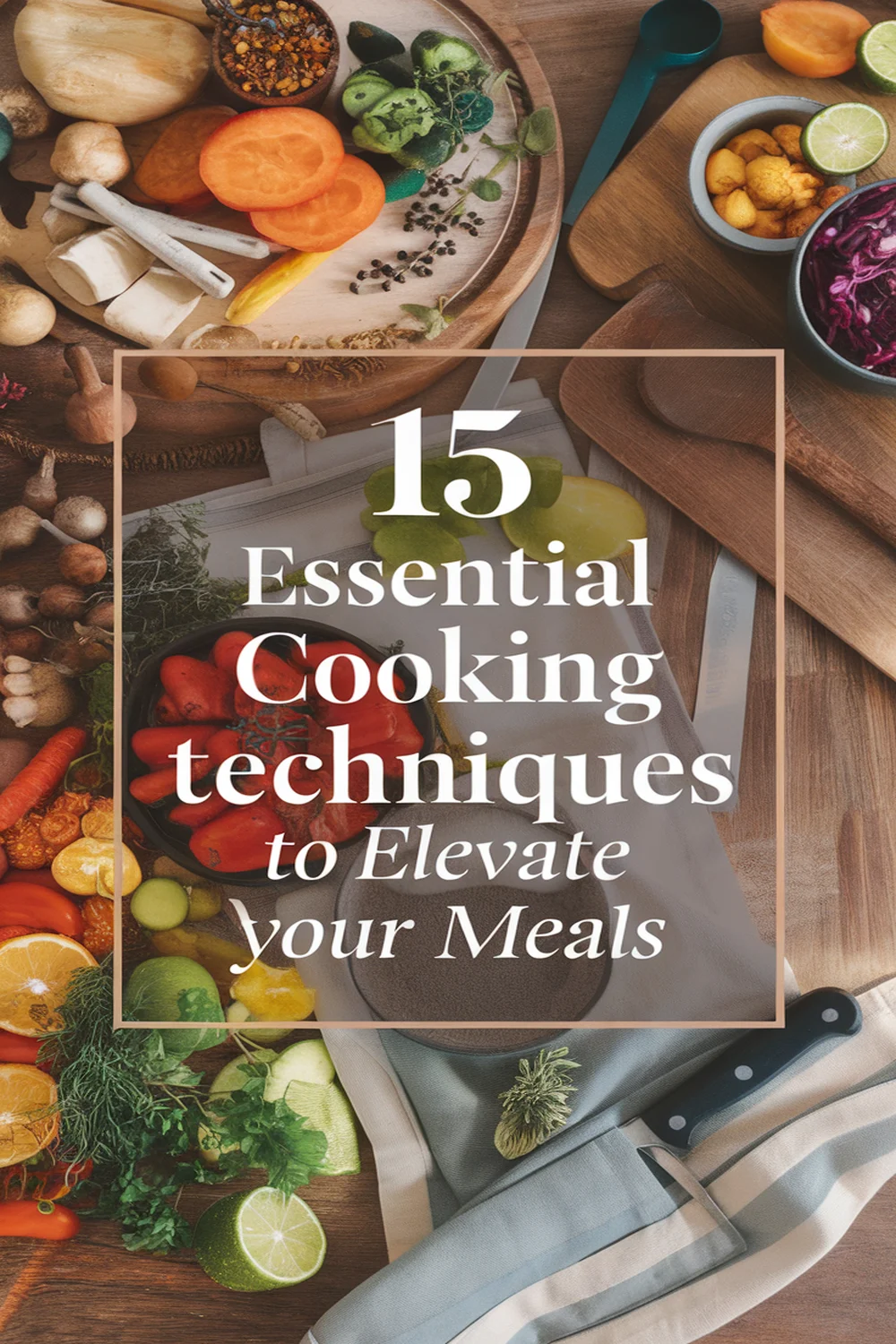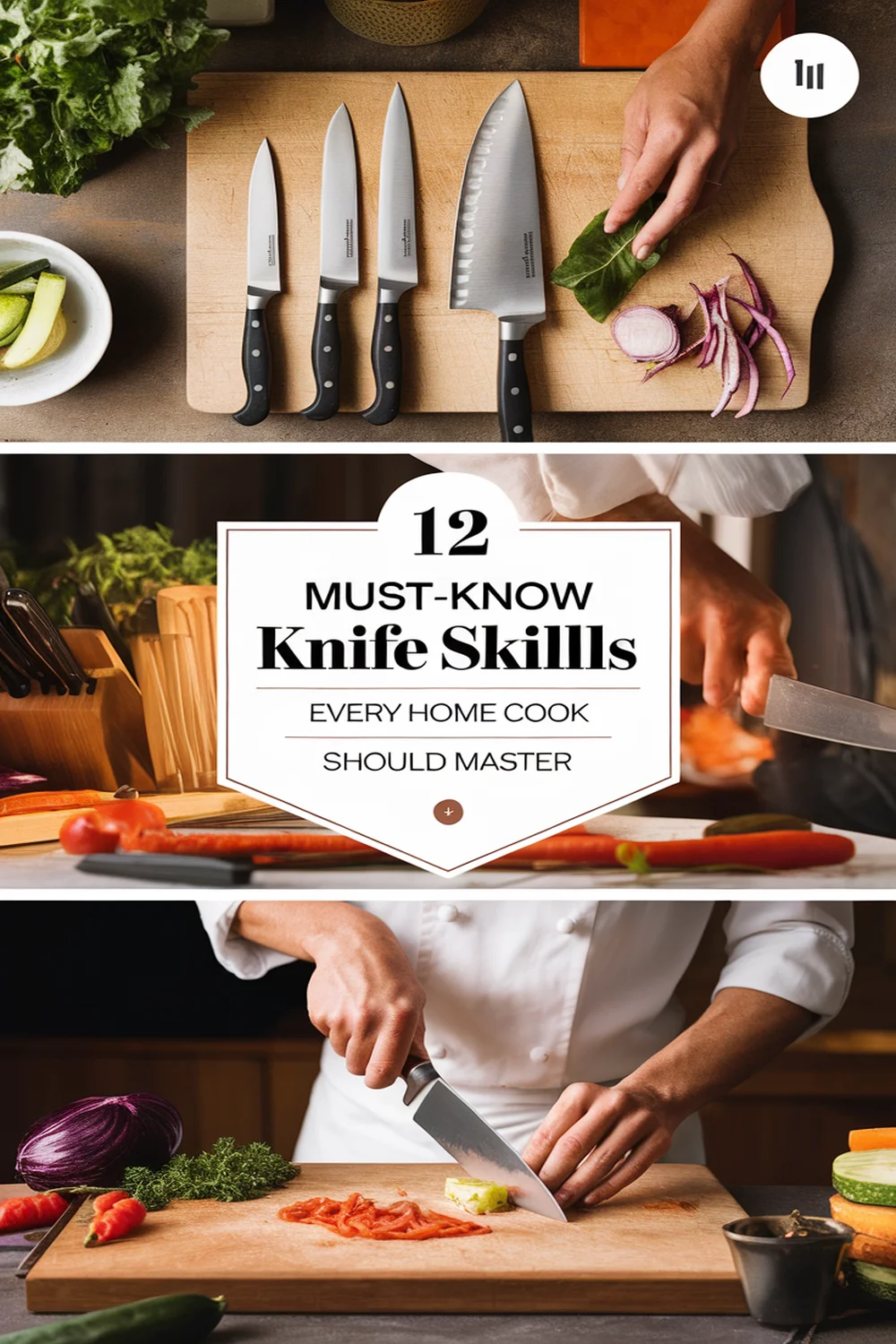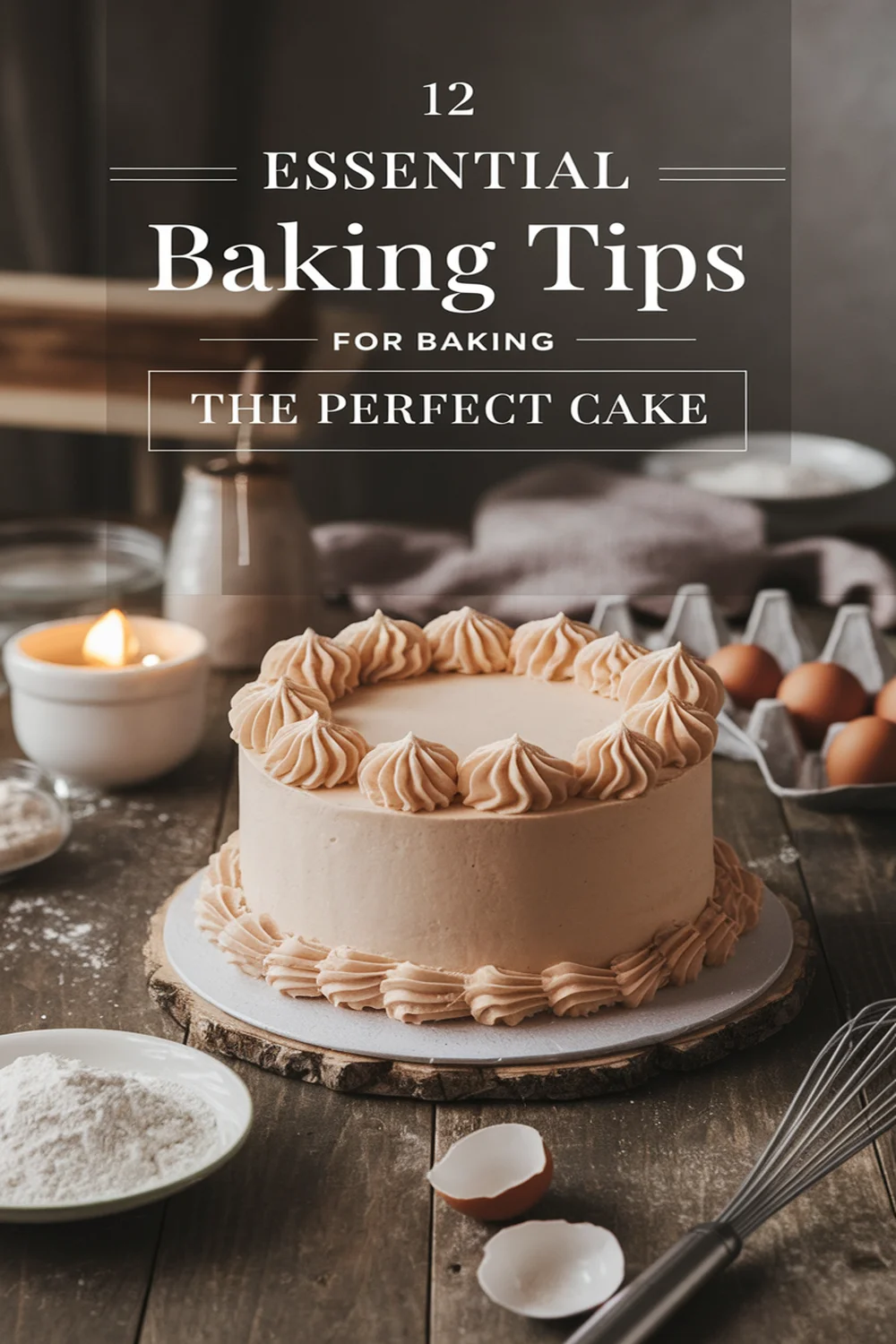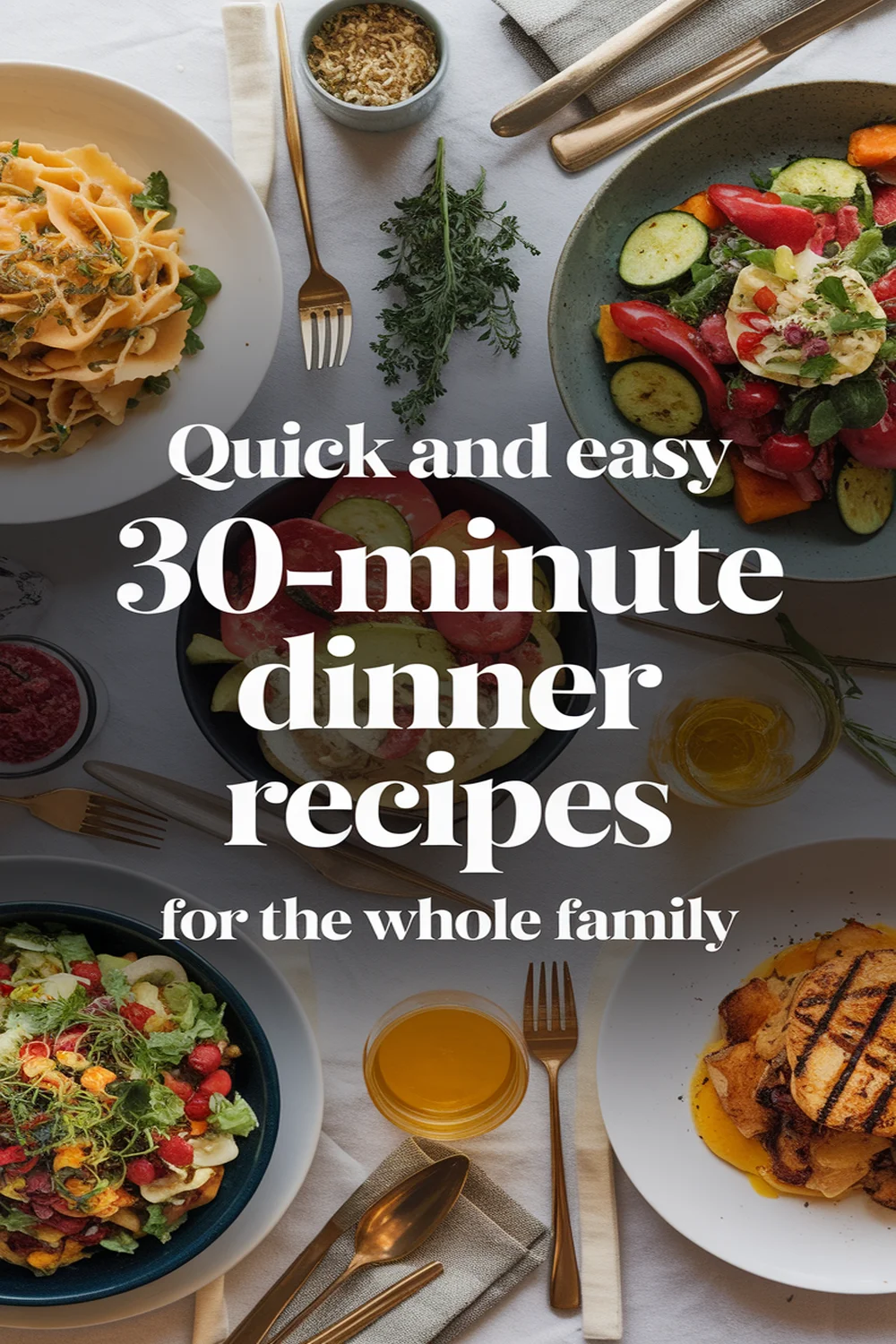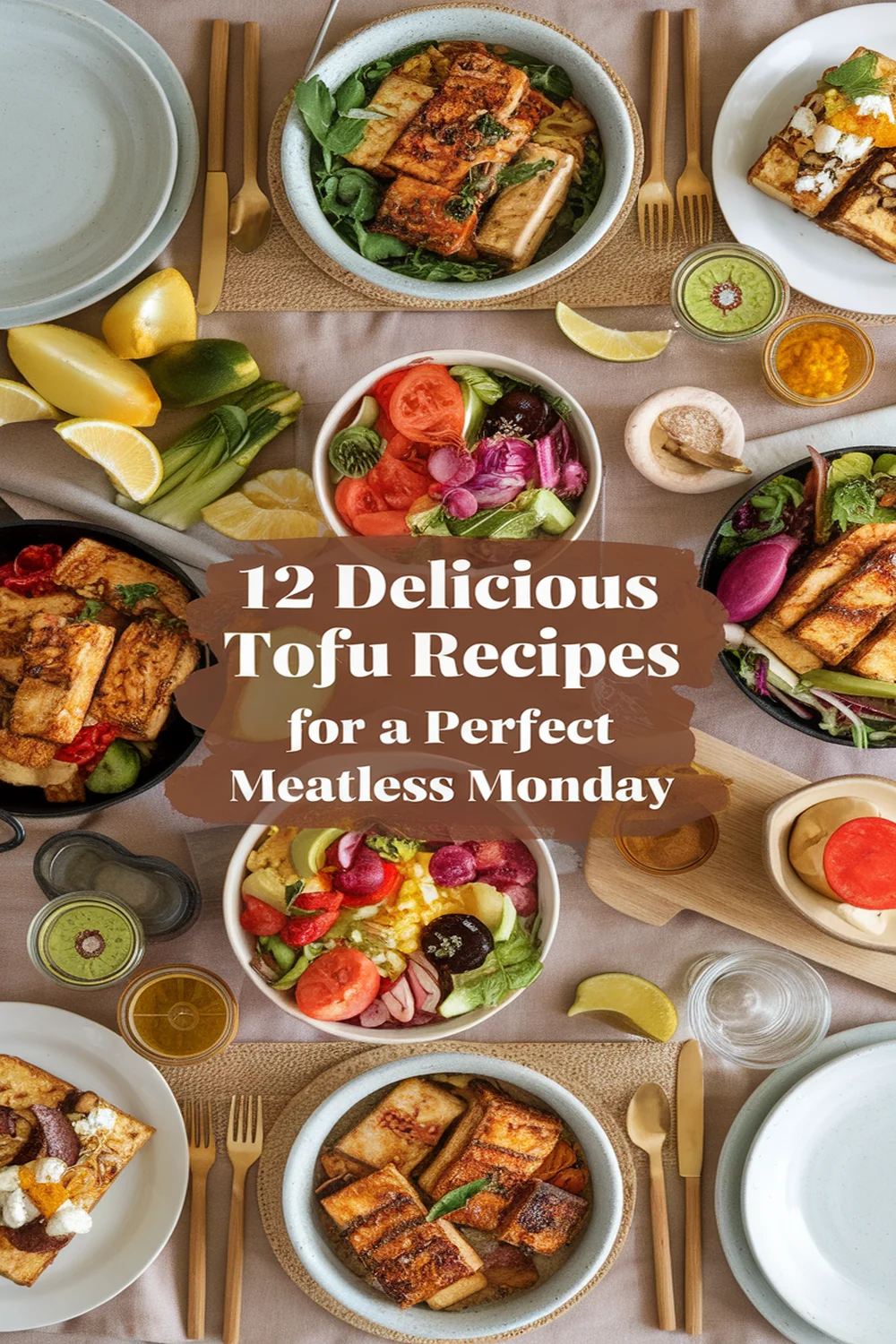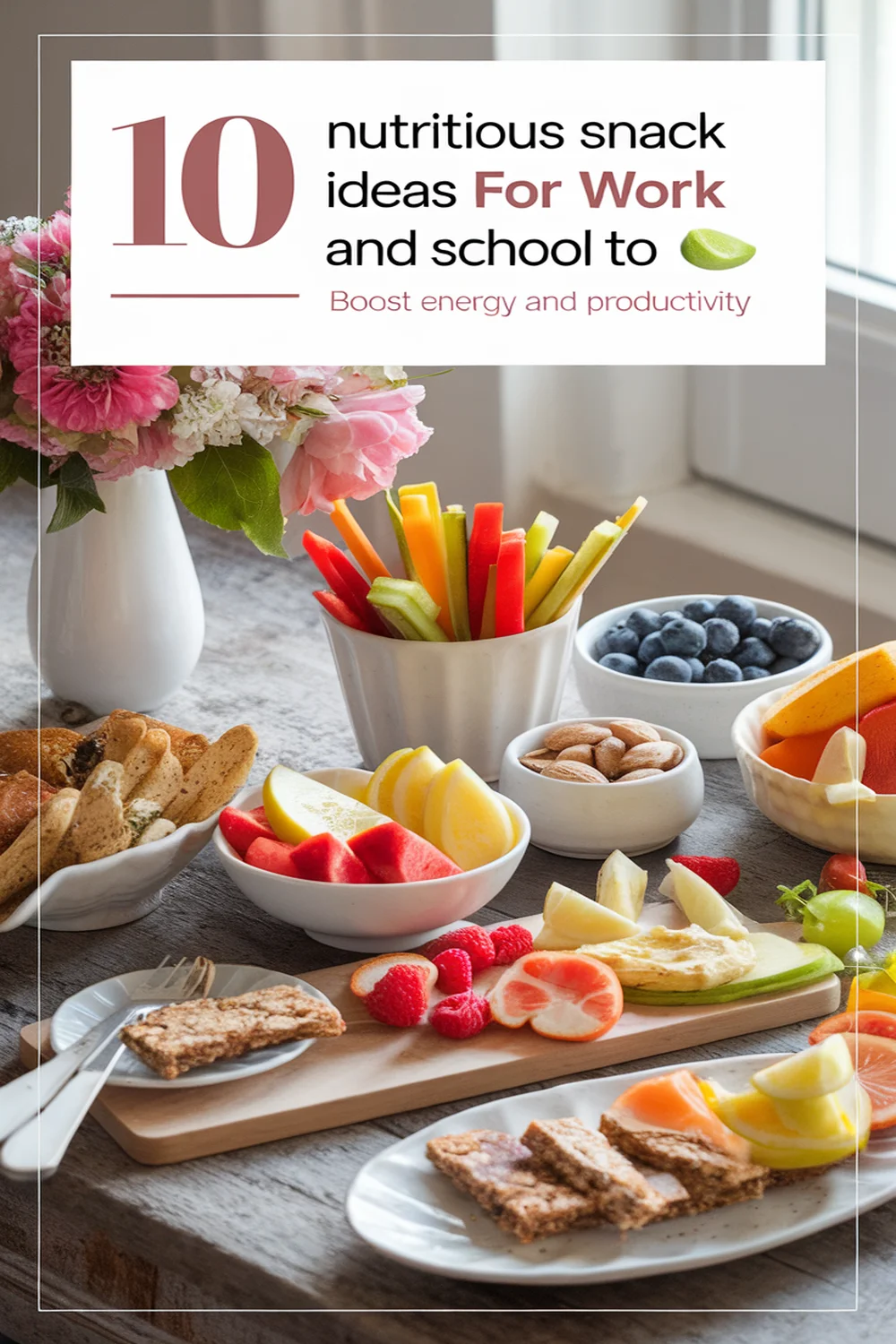This post may contain affiliate links. Please read our policy page.
As a beginner chef, mastering essential cooking hacks can elevate your skills. Start by learning proper vegetable chopping techniques for safety and efficiency. Seasoning boosts flavors, so experiment with herbs and spices. Keep your kitchen organized to save time, and always use knives safely. Simplifying meal prep can make weeknight cooking a breeze, while understanding cooking times guarantees everything cooks evenly. Don’t forget baking basics and essential kitchen tools—these tips will transform your culinary experience and improve your confidence.
How to Properly Chop Vegetables
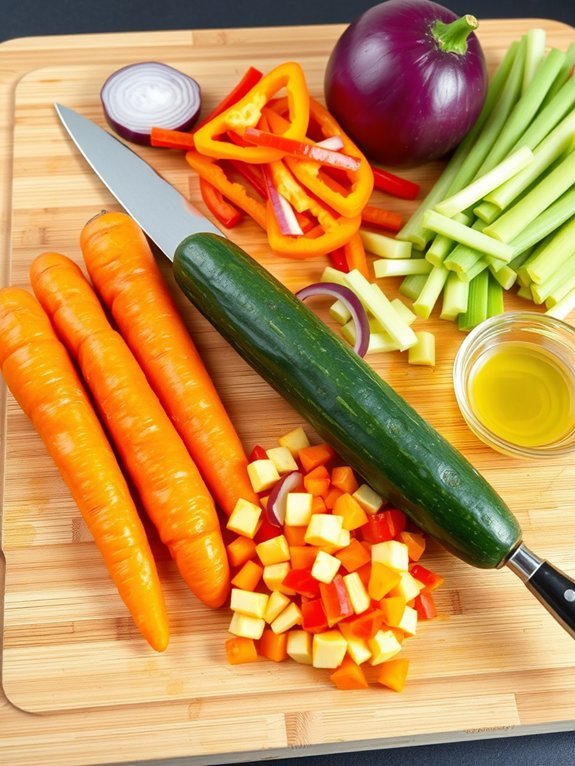
Chopping vegetables is a fundamental skill for any kitchen novice, and mastering this technique can vastly improve your cooking experience and efficiency. Whether you’re preparing a simple salad, a hearty stir-fry, or a comforting soup, knowing how to properly chop your ingredients lays the groundwork for a delicious dish.
It’s not just about getting the veggies cut; it’s also about making sure that they cook evenly and look appealing on the plate.
To start, gather your vegetables of choice. Begin with a clean cutting board and a sharp chef’s knife, which is vital for making precise cuts. For those new to chopping, the three most common cuts you should master are dicing, slicing, and mincing.
It’s important to pay attention to your knife skills, as this will make your food preparation safer and more enjoyable. As you gain confidence, you’ll find that the time spent practicing your chopping technique is well worth the effort.
- 2 medium-sized carrots
- 1 bell pepper (any color)
- 1 cucumber
- 1 red onion
- 2 stalks of celery
- Olive oil
- Salt and pepper
Begin by washing all your vegetables thoroughly.
For the carrots, peel them using a vegetable peeler, then slice them into thin rounds, possibly halving each piece if they’re too thick. Chop the bell pepper by removing the stem and seeds, then cut it into strips and dice them into bite-sized pieces.
Next, for cucumbers, cut off the ends before making long slices lengthwise, and chop them into semi-circles. Then, peel the red onion and slice it thinly, finally chopping it into smaller pieces if desired. For the celery, simply remove any tough ends and slice them into little sticks.
Combine all chopped vegetables in a large bowl, drizzle with olive oil, and season with salt and pepper before serving or using them in your desired dish.
When chopping vegetables, always make sure your knife is sharp; a dull knife can be more dangerous. To maintain safety, keep your fingers curled back while holding the vegetable, using your knuckles as a guide for the knife.
Don’t rush the process; take your time to make uniform cuts, as they’ll help the vegetables cook evenly. Finally, consider chopping your vegetables in advance and storing them in the fridge to save time during meal prep. Enjoy your cooking journey!
Recommended Items
Get ready to elevate your cooking game with these must-have products and tools!
Mastering the Art of Seasoning

Mastering the art of seasoning can transform a simple dish into a culinary delight. The key to flavorful food lies in understanding how to enhance and elevate the natural tastes of your ingredients. This recipe for perfectly seasoned roasted vegetables is an excellent way for beginner chefs to practice their seasoning skills, while also enjoying a colorful and nutritious side dish.
Roasting vegetables brings out their natural sweetness while adding a delightful caramelization. Pairing them with the right combination of herbs and spices won’t only tantalize your taste buds but also make it easy for you to learn the balance between different flavors. This dish is versatile, allowing you to mix and match depending on the vegetables in season or your personal preferences.
- 1 pound mixed vegetables (such as bell peppers, zucchini, carrots, and red onions)
- 3 tablespoons olive oil
- 1 teaspoon salt
- 1/2 teaspoon black pepper
- 1 teaspoon garlic powder
- 1 teaspoon dried Italian herbs (e.g., oregano, basil, thyme)
- Fresh parsley for garnish (optional)
Preheat your oven to 425°F (220°C). Chop your chosen vegetables into evenly sized pieces and place them in a large mixing bowl. Drizzle with olive oil and sprinkle with salt, black pepper, garlic powder, and dried Italian herbs. Toss the vegetables until they’re evenly coated with the seasoning mixture.
Spread them out in a single layer on a baking sheet lined with parchment paper, and roast in the oven for 20-25 minutes, stirring halfway through, until they’re tender and golden brown.
When seasoning your roasted vegetables, don’t be afraid to experiment with different herbs and spices. Fresh herbs can brighten up the dish even more, so consider adding them at the end of cooking. If you prefer a bit of heat, a pinch of red pepper flakes can elevate the flavor profile.
Remember to taste as you go along; seasoning is personal, and you can adjust the amounts to better suit your palate. Finally, for an added depth of flavor, a splash of balsamic vinegar or a sprinkle of lemon juice can also enhance the roasted vegetables just before serving.
Efficiently Organizing Your Kitchen
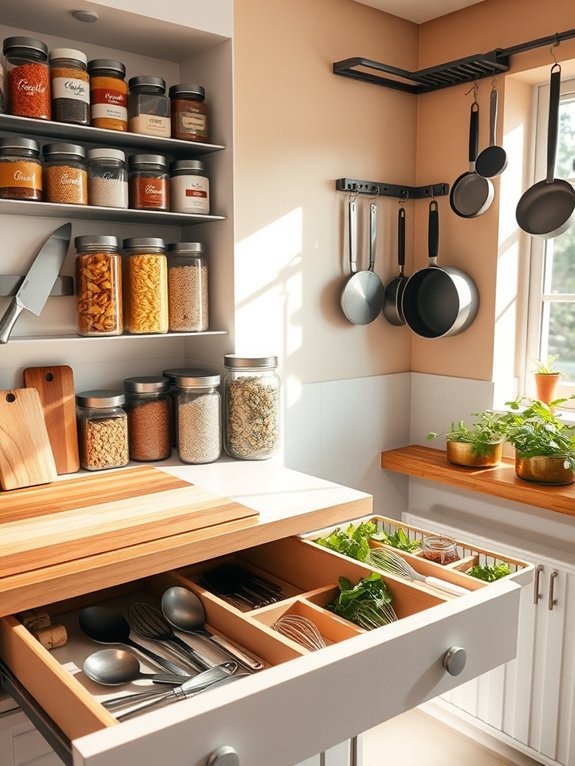
To efficiently organize your kitchen, it’s crucial to have a designated area for everything you use regularly. This not only helps when you’re preparing meals but also saves time when you’re looking for utensils or ingredients.
Start by emptying your cabinets, drawers, and pantry. Clean these spaces before returning the items, discarding anything that has expired or you seldom use. Implement clear categories—baking goods in one area, oils and vinegars in another, and so on. Invest in storage containers and labels to keep everything easily identifiable, making cooking a smoother, more enjoyable experience.
Once your kitchen is tidy, it’s time to establish a systematic approach to organizing your cooking tools and utensils. Group similar items together; for instance, keep all pots and pans in one cabinet while placing mixing bowls and measuring cups nearby for easy access.
Consider using drawer organizers or magnetic strips to hold knives and cooking utensils. Elevating ingredients in jars helps find them quickly while also improving the aesthetics of your kitchen. With a little creativity and dedication to organization, cooking will become more enjoyable and efficient.
- Storage containers
- Labeling materials
- Drawer organizers
- Magnetic strips
- Cleaning supplies
- Jars for ingredients
- Shelves or stands for elevation
Begin by decluttering your kitchen space. Empty cabinets and drawers, and sort through items, discarding any expired or seldom-used items. After cleaning the areas, categorize the remaining items into groups such as cooking, baking, and serving.
Hierarchically arrange the kitchenware by frequency of use, placing commonly used utensils, spices, and ingredients at the front and less frequently used items towards the back.
When organizing your kitchen, remember to frequently reassess your space to keep it manageable. As your cooking habits evolve, don’t hesitate to adapt your organization system to suit your needs better.
Keep a small insert of essential items, so they’re always at hand, and optimize vertical storage with shelves to avoid clutter. Make it a fun family activity by involving loved ones, turning the task into a bonding experience as well as a productive one!
Using Knives Safely and Effectively
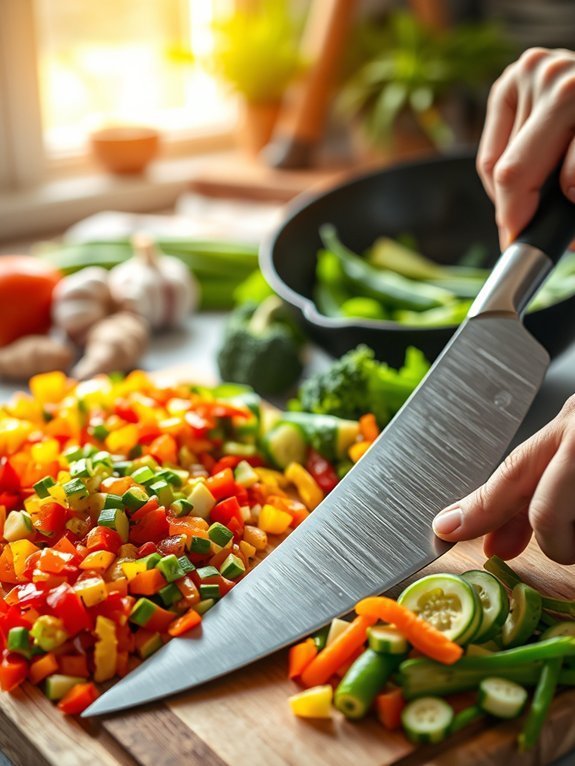
Using knives safely and effectively is essential for any beginner chef looking to master the art of cooking. One of the best ways to practice these skills is by preparing a vibrant and delicious Vegetable Stir-Fry, which not only showcases your knife skills but also allows you to combine fresh ingredients in a quick and healthy meal.
By dicing, slicing, and chopping various vegetables, you’ll become more comfortable handling a knife while crafting a fantastic dish.
In this recipe, you’ll learn how to choose the right knife for different cuts, maintain a proper grip, and practice safe cutting techniques as you prepare colorful vegetables. Stir-frying is a great technique for beginners, as it requires high heat and speed, giving you the opportunity to focus on your knife skills while creating a delicious meal that can be enjoyed by all.
- 2 cups of mixed bell peppers (red, green, yellow, diced)
- 1 medium zucchini (sliced)
- 1 cup of broccoli florets
- 1 cup of snap peas
- 2 cloves of garlic (minced)
- 1 tablespoon of fresh ginger (grated)
- 2 tablespoons soy sauce
- 1 tablespoon vegetable oil
- Salt and pepper to taste
- Optional: sesame seeds for garnish
To make the Vegetable Stir-Fry, begin by prepping your vegetables; wash, peel, and cut them as described above.
Heat the vegetable oil in a large skillet or wok over medium-high heat. Once hot, add the minced garlic and grated ginger, sautéing for about 30 seconds until fragrant.
Next, add the diced bell peppers, zucchini, broccoli, and snap peas to the skillet. Stir-fry the vegetables for 5-7 minutes until they’re tender but crisp. Finally, pour in the soy sauce and season with salt and pepper to taste, tossing everything to combine.
When cooking this dish, remember to keep your knife skills sharp—not only in the sense of the blade but in your technique. Always use a cutting board, and practice proper knife grip: hold the handle firmly with your dominant hand while pinching the blade with your thumb and index finger.
This control will help guarantee your safety as you chop quickly and confidently. Finally, don’t be afraid to experiment with different vegetables or add protein like chicken or tofu to suit your taste. Enjoy your cooking journey!
Simplifying Meal Prep

Meal prepping can seem intimidating for beginner chefs, but it’s a fantastic way to eat healthier and save time during the week. By preparing meals in advance, you can guarantee that you have nutritious, home-cooked options available, even on your busiest days. With just a bit of organization, you can prepare a delicious, versatile dish that can be enjoyed in various ways. This simple baked chicken and roasted vegetables recipe will serve as a foundation for multiple meals throughout the week, allowing you to mix and match your sides and flavors.
In this recipe, the chicken is seasoned to perfection and paired with an assortment of colorful vegetables. The best part is that everything is baked together on a single sheet pan, which minimizes cleanup and makes meal prep feel manageable. By preparing a larger batch, you’ll have enough protein and veggies to last you for several days, contributing to a balanced diet without much fuss at mealtime.
Ingredients:
- 4 boneless, skinless chicken breasts
- 2 cups broccoli florets
- 2 cups bell peppers (mixed colors), sliced
- 2 cups cherry tomatoes, halved
- 1 red onion, sliced
- 4 tablespoons olive oil
- 2 teaspoons garlic powder
- 2 teaspoons paprika
- Salt and pepper to taste
- Fresh herbs (optional), such as thyme or rosemary for garnish
Preheat your oven to 425°F (220°C) and line a large baking sheet with parchment paper for easy cleanup. In a large bowl, combine the chicken breasts and half of the olive oil, garlic powder, paprika, salt, and pepper. Toss until the chicken is evenly coated.
In another bowl, mix the vegetables with the remaining olive oil and season with salt and pepper. Spread the chicken on one side of the baking sheet and the vegetables on the other side. Bake for 25-30 minutes, or until the chicken reaches an internal temperature of 165°F (75°C) and the vegetables are tender and slightly caramelized. Once cooked, let everything rest for a few minutes before slicing the chicken and serving.
When meal prepping, consider your storage options. Invest in some quality meal prep containers to keep your meals fresh throughout the week. You can also diversify your meals by adding different sauces or grains, such as quinoa or brown rice, when you serve leftovers.
Don’t hesitate to experiment with different vegetables or spice blends based on your preferences and what’s in season. In conclusion, make sure to label your containers with the date and contents, so you can enjoy your delicious preparations all week long!
Step-by-Step Cooking Guide
Cooking With Herbs and Spices
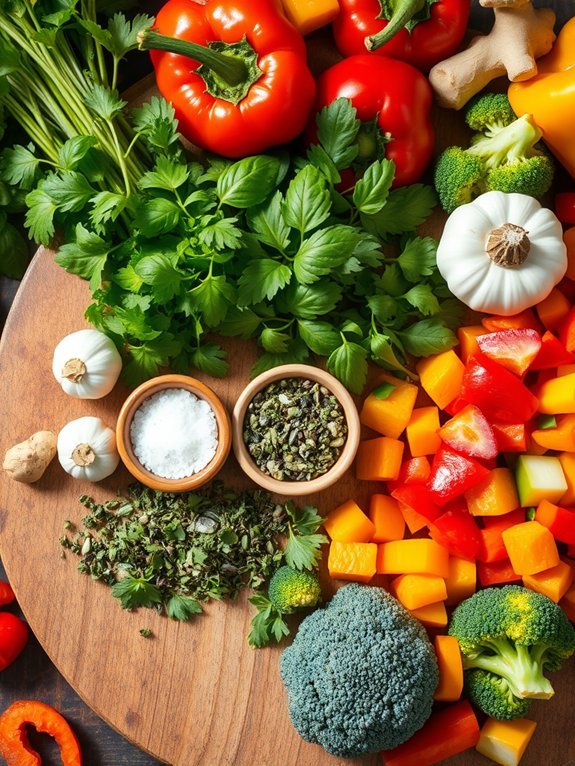
Cooking with herbs and spices can elevate your dishes, adding depth, flavor, and nutrition to various meals. Beginners might find it both exciting and overwhelming to navigate the myriad options available, but starting with a simple recipe can help build confidence. This recipe for Herb-Infused Vegetable Stir-Fry introduces everyday vegetables powered by the wonderful flavors of fresh herbs and spices, making it a perfect beginner dish.
The beauty of this stir-fry lies in its versatility; you can adjust the herbs and spices according to your taste preferences or what’s available. The vibrant colors of the vegetables combined with aromatic herbs not only enhance the dish visually but also delivers an exciting burst of flavors with every bite. A sprinkle of fresh herbs at the end adds brightness and an aromatic finish, setting this dish apart as a flavorful staple in your kitchen.
Ingredients:
- 2 cups mixed vegetables (e.g., bell peppers, broccoli, snap peas, carrots)
- 2 tablespoons olive oil
- 2 cloves garlic, minced
- 1 teaspoon ginger, minced
- 1 tablespoon soy sauce
- 1 teaspoon dried oregano
- 1 teaspoon dried basil
- Salt and pepper to taste
- Fresh basil or parsley for garnish
- Optional: crushed red pepper flakes for heat
Heat the olive oil in a large skillet or wok over medium-high heat. Add the minced garlic and ginger, sautéing for about 30 seconds until fragrant. Then toss in the mixed vegetables and stir-fry for 3-5 minutes until they’re just tender but still crisp.
Pour in the soy sauce, and sprinkle the dried oregano and basil over the vegetables. Stir well to combine all the flavors, season with salt, pepper, and optional red pepper flakes, and cook for another minute. Remove from heat and serve hot, garnished with fresh basil or parsley.
When cooking with herbs and spices, freshness matters. If using dried herbs, try to select a brand that isn’t expired, as they can lose their potency over time. For the best flavor, consider using fresh herbs when possible, chopping them just before adding to retain their essential oils.
Additionally, feel free to experiment—mixing herbs or adding spices based on your preferences can turn a basic dish into a signature one!
Understanding Cooking Times and Techniques
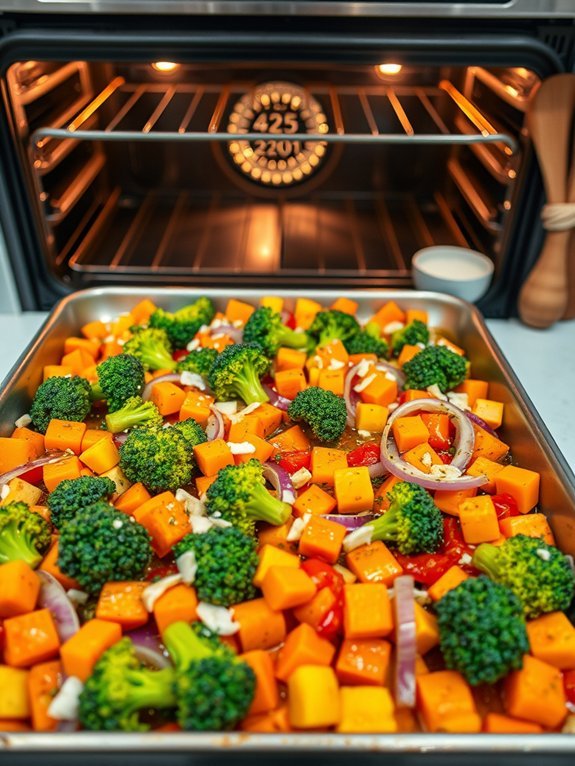
Cooking is a wonderful journey of exploration, and understanding cooking times and techniques is foundational to mastering the art. Time management plays an essential role when preparing a dish; it not only guarantees that your meal is cooked to perfection, but it also helps to streamline the cooking process so that you can enjoy it without feeling rushed.
Every ingredient and method has its own ideal time frame for cooking, which can vary depending on size, freshness, and desired texture. This recipe will guide you through preparing a simple yet delicious roasted vegetable medley, perfect for getting comfortable with the timing of different vegetables.
For this dish, you’ll be working with a variety of vegetables, each requiring different cooking times. The key is to cut them into uniform pieces to guarantee even cooking, and to start with those that take the longest to cook. You’ll also learn a straightforward roasting technique that caramelizes the natural sugars in the vegetables, bringing out their flavor.
Whether you serve this medley as a side or toss it into salads or grain bowls, it’s an excellent way to practice your cooking timing and technique.
Ingredients:
- 2 cups of broccoli florets
- 2 cups of diced carrots
- 1 bell pepper, diced
- 1 cup of diced red onion
- 2 cloves of garlic, minced
- 3 tablespoons of olive oil
- Salt and pepper to taste
- A tablespoon of dried herbs (such as thyme, rosemary, or Italian seasoning)
Preheat your oven to 425°F (220°C). In a large bowl, combine the broccoli, carrots, bell pepper, red onion, and minced garlic. Drizzle the olive oil over the vegetables, followed by salt, pepper, and dried herbs. Toss everything together until the vegetables are evenly coated.
Spread the mixture onto a large baking sheet in a single layer, making sure to allow enough space for caramelization. Roast in the preheated oven for about 20-25 minutes, stirring halfway through to promote even cooking, until the vegetables are tender and slightly charred.
One tip to keep in mind is to not overcrowd the baking sheet; otherwise, the vegetables can steam instead of roast, which will prevent that delicious caramelization. If you find you have too many vegetables for one sheet, it’s better to use two sheets or roast in batches.
Additionally, always keep an eye on the vegetables towards the end of the cooking time, as ovens can vary, and you want to catch them just at the point of becoming tender yet still vibrant and flavorful.
Tips for Perfectly Boiling Water
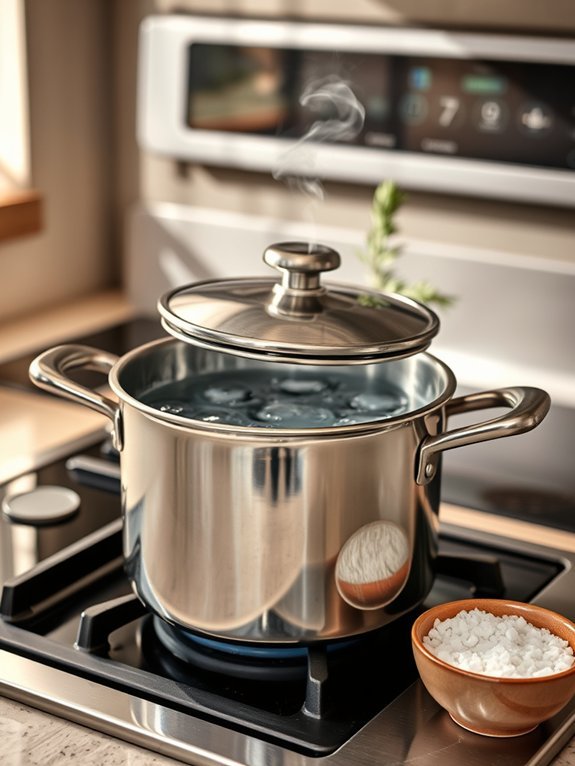
Boiling water may seem simple, but there are subtle techniques that can make the process smoother and more efficient. Whether you’re preparing pasta, making a soup, or just need hot water for tea, knowing how to properly boil water is essential in the kitchen. The key is in the preparation and maintaining the right temperature throughout the process, ensuring you achieve that perfect rolling boil that makes cooking effortless.
To begin, you’ll want to choose the right pot for the job. Using a pot with a lid can help retain heat, allowing the water to boil faster. Additionally, remember that the amount of water and the size of the pot can greatly influence the boiling time.
Keeping an eye on your heat settings, you’ll soon master the art of boiling water, leading to delicious dishes that rely on this essential technique.
- Fresh water
- A sturdy pot
- A lid (optional)
- A heat source (stove)
Fill your pot with fresh, cold water and place it on the stove over high heat. If you want to speed up the process, covering the pot with a lid will trap heat and help the water reach its boiling point faster.
Once the water starts to form small bubbles, you’ll know it’s close to boiling. When the bubbles are vigorously breaking the surface of the water (known as a rolling boil), it’s time to use the water for your intended recipe.
When boiling water, keep in mind that the quality of your water can affect the final outcome. Use filtered or fresh tap water for the best results.
Additionally, if you’re boiling water for pasta or vegetables, adding a pinch of salt not only enhances flavor but also increases the boiling point, resulting in faster cooking times.
Finally, never leave boiling water unattended, as it can quickly boil over and create a mess on your stove.
Baking Basics Every Beginner Should Know
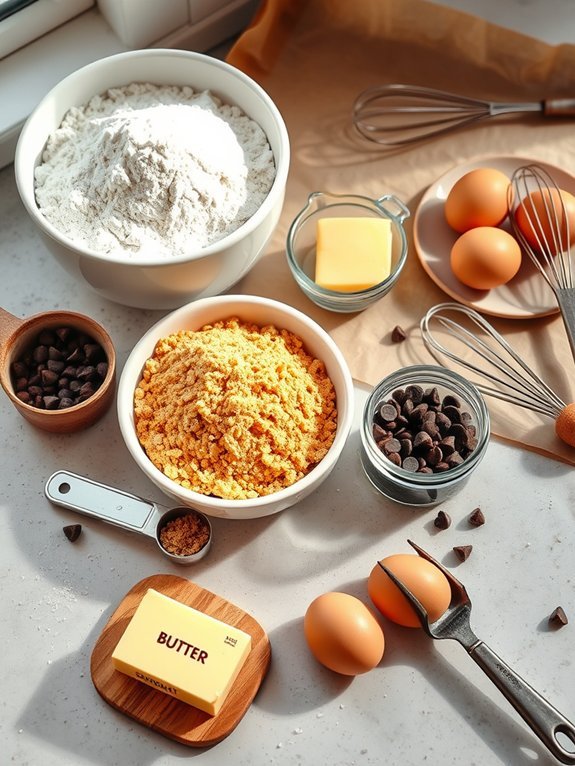
Baking is an essential skill for any beginner chef looking to enhance their culinary repertoire. It brings the joy of creating delicious treats and the satisfaction of watching raw ingredients transform into golden-brown delights in the oven.
While baking may seem intimidating at first, understanding the basics can empower you to experiment and discover your own signature recipes. Today, we’ll walk through a simple yet classic recipe for chocolate chip cookies, a beloved treat that anyone can master.
Chocolate chip cookies are the perfect starting point in your baking journey. They require minimal ingredients and equipment, making them accessible to novice bakers. The combination of buttery dough and rich chocolate creates a delightful contrast in texture and flavor.
In addition, these cookies embody the essence of home-baked goodness, making them ideal for sharing with family and friends or simply enjoying fresh from the oven yourself.
- 2 1/4 cups all-purpose flour
- 1/2 teaspoon baking soda
- 1 cup unsalted butter, softened
- 1/2 cup granulated sugar
- 1 cup brown sugar, packed
- 1 teaspoon salt
- 2 teaspoons vanilla extract
- 2 large eggs
- 2 cups semi-sweet chocolate chips
Preheat your oven to 350°F (175°C). In a small bowl, whisk together the flour and baking soda; set aside. In a large mixing bowl, beat the softened butter with both sugars until creamy and smooth.
Add in the salt, vanilla extract, and eggs one at a time, mixing well after each addition. Gradually incorporate the flour mixture until just combined, then fold in the chocolate chips. Scoop tablespoon-sized portions of dough onto a baking sheet, leaving enough space between them, and bake for 9-11 minutes or until the edges are golden but the centers remain soft.
When baking cookies, the quality of ingredients matters! Always use unsalted butter for better control over salt levels and opt for high-quality chocolate chips for superior flavor. Additionally, for a chewy texture, be careful not to over-mix the dough once you add the flour.
Letting the cookie dough chill in the fridge for at least 30 minutes before baking can also enhance the flavor and texture of your cookies. Keep an eye on the cookies while baking; they may seem undercooked when you take them out, but they’ll continue to set as they cool on the baking sheet.
Enjoy your delicious homemade treats!
Essential Kitchen Tools You Need
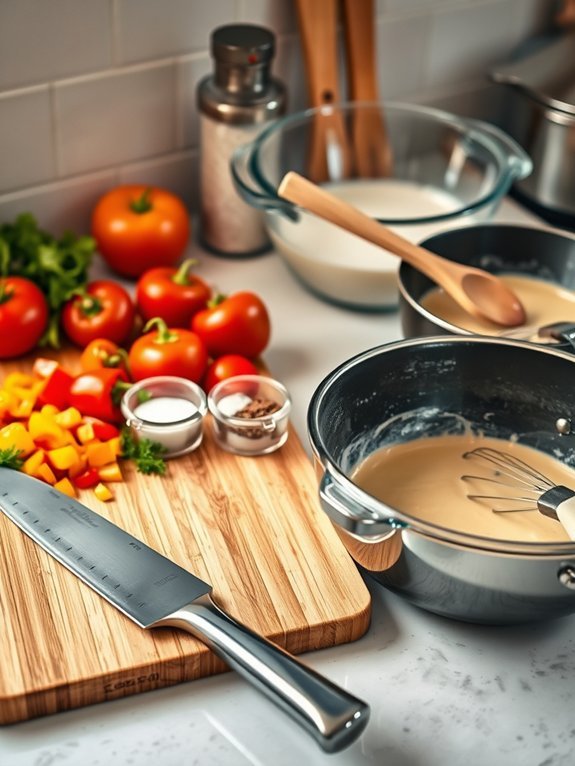
When beginning your culinary journey, having the right tools can make all the difference. Essential kitchen tools not only streamline the cooking process but also enhance your abilities, allowing you to create delicious meals with confidence. From the moment you unbox your knife set or set up your cutting board, you’ll feel equipped to tackle a range of recipes, whether they’re simple weeknight dinners or more elaborate weekend projects.
No kitchen is complete without a few key essentials. A good chef’s knife, sturdy cutting board, reliable measuring cups, and quality pots and pans form the backbone of any cooking endeavor. With these tools at hand, beginner chefs can learn the fundamental techniques and create a wide variety of dishes—from perfecting the perfect scramble to whipping up a creamy risotto. By mastering these basics, you’ll build the foundation for future culinary adventures.
- Chef’s knife
- Cutting board
- Measuring cups
- Mixing bowls
- Non-stick frying pan
- Saucepan
- Wooden spoon
- Baking sheet
Start by gathering all your essential kitchen tools in one area to guarantee an organized cooking space.
Begin with your cutting board and chef’s knife, chopping ingredients as necessary. If you’re preparing dishes that require cooking elements such as sautéing or boiling, make sure to preheat your non-stick frying pan and saucepan while you finish prepping your ingredients. Measure everything accurately to maintain consistency in flavor and texture, and cook according to your chosen recipe while enjoying the process of bringing a dish to life.
When cooking, remember to keep your workspace tidy and do a little cleaning as you go to avoid overwhelming mess at the end of your cooking session.
Don’t hesitate to experiment with different techniques you’ve learned as you grow more comfortable with these essential tools; practice makes perfect! Additionally, take breaks between chopping or stirring to maintain focus on your task, guaranteeing every component is properly prepared for a successful dish.

